new posts in all blogs
Viewing: Blog Posts Tagged with: frontier, Most Recent at Top [Help]
Results 1 - 11 of 11
How to use this Page
You are viewing the most recent posts tagged with the words: frontier in the JacketFlap blog reader. What is a tag? Think of a tag as a keyword or category label. Tags can both help you find posts on JacketFlap.com as well as provide an easy way for you to "remember" and classify posts for later recall. Try adding a tag yourself by clicking "Add a tag" below a post's header. Scroll down through the list of Recent Posts in the left column and click on a post title that sounds interesting. You can view all posts from a specific blog by clicking the Blog name in the right column, or you can click a 'More Posts from this Blog' link in any individual post.

By: Eleanor Jackson,
on 9/17/2014
Blog:
OUPblog
(
Login to Add to MyJacketFlap)
JacketFlap tags:
Books,
History,
Africa,
soldiers,
race,
African,
British,
Europe,
wall,
Rome,
frontier,
Romans,
African History,
border,
Roman Britain,
British history,
guard,
*Featured,
Moors,
Game of Thrones,
Classics & Archaeology,
auxilia,
emporer,
Hadrian’s Wall,
roman history,
Add a tag
Hadrian’s Wall has been in the news again recently for all the wrong reasons. Occasional wits have pondered on its significance in the Scottish Referendum, neglecting the fact that it has never marked the Anglo-Scottish border, and was certainly not constructed to keep the Scots out. Others have mistakenly insinuated that it is closed for business, following the widely reported demise of the Hadrian’s Wall Trust. And then of course there is the Game of Thrones angle, best-selling writer George R R Martin has spoken of the Wall as an inspiration for the great wall of ice that features in his books.
Media coverage of both Hadrian’s Wall Trust’s demise and Game of Thrones’ rise has sometimes played upon and propagated the notion that the Hadrian’s Wall was manned by shivering Italian legionaries guarding the fringes civilisation – irrespective of the fact that the empire actually trusted the security of the frontier to its non-citizen soldiers, the auxilia rather than to its legionaries. The tendency to overemphasise the Italian aspect reflects confusion about what the Roman Empire and its British frontier was about. But Martin, who made no claims to be speaking as a historian when he spoke of how he took the idea of legionaries from Italy, North Africa, and Greece guarding the Wall as a source of inspiration, did at least get one thing right about the Romano-British frontier.
There were indeed Africans on the Wall during the Roman period. In fact, at times there were probably more North Africans than Italians and Greeks. While all these groups were outnumbered by north-west Europeans, who tend to get discussed more often, the North African community was substantial, and its stories warrant telling.
Perhaps the most remarkable tale to survive is an episode in the Historia Augusta (Life of Severus 22) concerning the inspection of the Wall by the emperor Septimius Severus. The emperor, who was himself born in Libya, was confronted by a black soldier, part of the Wall garrison and a noted practical joker. According to the account the notoriously superstitious emperor saw in the soldier’s black skin and his brandishing of a wreath of Cyprus branches, an omen of death. And his mood was not further improved when the soldier shouted the macabre double entendre iam deus esto victor (now victor/conqueror, become a god). For of course properly speaking a Roman emperor should first die before being divinized. The late Nigerian classicist, Lloyd Thompson, made a powerful point about this intriguing passage in his seminal work Romans and Blacks, ‘the whole anecdote attributes to this man a disposition to make fun of the superstitious beliefs about black strangers’. In fact we might go further, and note just how much cultural knowledge and confidence this frontier soldier needed to play the joke – he needed to be aware of Roman funerary practices, superstitions, and the indeed the practice of emperor worship itself.
Why is this illuminating episode not better known? Perhaps it is because there is something deeply uncomfortable about what could be termed Britain’s first ‘racist joke’, or perhaps the problem lies with the source itself, the notoriously unreliable Historia Augusta. And yet as a properly forensic reading of this part of the text by Professor Tony Birley has shown, the detail included around the encounter is utterly credible, and we can identify places alluded to in it at the western end of the Wall. So it is quite reasonable to believe that this encounter took place.
Not only this, but according to the restoration of the text preferred by Birley and myself, there is a reference to a third African in this passage. The restoration post Maurum apud vallum missum in Britannia indicates that this episode took place after Severus has granted discharge to a soldier of the Mauri (the term from which ‘Moors’ derives). And has Birley has noted, we know that there was a unit of Moors stationed at Burgh-by-Sands on the Solway at this time.
Sadly, Burgh is one of the least explored forts on Hadrian’s Wall, but some sense of what may one day await an extensive campaign of excavation there comes from Transylvania in Romania, where investigations at the home of another Moorish regiment of the Roman army have revealed a temple dedicated to the gods of their homelands. Perhaps too, evidence of different North African legacies would emerge. The late Vivian Swann, a leading expert in the pottery of the Wall has presented an attractive case that the appearance of new forms of ceramics indicates the introduction of North African cuisine in northern Britain in the second and third centuries AD.
What is clear is that the Mauri of Burgh-by-Sands were not the only North Africans on the Wall. We have an African legionary’s tombstone from Birdoswald, and from the East Coast the glorious funerary stela set up to commemorate Victor, a freedman (former slave) by his former master, a trooper in a Spanish cavalry regiment. Victor’s monument now stands on display in Arbeia Museum at South Shields next to the fine, and rather better known, memorial to the Catuvellunian Regina, freedwoman and wife of Barates from Palmyra in Syria. Together these individuals, and the many other ethnic groups commemorated on the Wall, remind us of just how cosmopolitan the people of Roman frontier society were, and of how a society that stretched from the Solway and the Tyne to the Euphrates was held together.
The post African encounters in Roman Britain appeared first on OUPblog.

.jpeg?picon=2982)
By: Caroline Starr Rose,
on 2/13/2013
Blog:
Caroline by line
(
Login to Add to MyJacketFlap)
JacketFlap tags:
pioneer,
verse novel,
frontier,
Great Plains,
novel-in-verse,
MAY B.,
soddies,
frontier books,
sod house,
historical verse novel,
soddy,
Interior Plains,
sod house interior,
Gaitherburg Kansas,
Add a tag
As I mentioned in the previous post, sod walls were typically two-feet thick. If you compare the exterior window pictures to this one, you'll see a generous ledge on both sides. Also notice the plastered walls. In MAY B. I make mention of this nicety through a conversation with Mrs. Oblinger, the new bride from the city, and May, the frontier girl.
from poem 29:
"I hate this place," she whispers.
Before I think better, I say,
"He's left a shade tree out front,
he's plastered the walls,
and he's putting in a proper floor."
"What'd you say?"
Does she even remember I'm here?
"Mr. Oblinger's a good man," I try again.
"He wants to make this home for you."
She stands over me now.
"You think plaster makes a difference in this place?
Look at this."
She holds out her mud-caked skirt.
"It's filthy here!
The ceiling leaks.
Sometimes snakes get through!"
The cool sod's where they like to nest.
"They help with mice," I offer.
She glares.
Sod houses were one room with little to no privacy. Here you see a bed right up against the stove, a tree trunk meant to support the roof also used to hang clothing.
These benches are made from hewed logs and are a great example of the wood used for puncheon floors (the proper flooring May mentions above -- many lived with packed earth underfoot) : the smooth side of a log faced up, the curved side down.
One way families kept dirt from falling from the sod above was to cover the ceiling in muslin.
How would you fare living this way?
.jpeg?picon=2982)
By: Caroline Starr Rose,
on 2/11/2013
Blog:
Caroline by line
(
Login to Add to MyJacketFlap)
JacketFlap tags:
Interior Plains,
sod house exterior,
Kansas,
pioneer,
verse novel,
frontier,
Great Plains,
mid-grade historical fiction,
MAY B.,
soddies,
bird cage,
frontier books,
sod house,
historical verse novel,
soddy,
Add a tag
In the years I've been blogging, no topic has drawn more visitors here than sod houses. I hope this post, showing the exterior of a Kansas soddy, and the next, its interior, will satisfy the curious!
My mother took these pictures while on an Elderhostel tour in 2009, just as I was putting some finishing touches on MAY B.
This sod house is located outside Gaithersburg, Kansas. You can see the family had access to enough wood -- perhaps a sawmill nearby? -- to build a door, frame out several windows, and lay lumber for a roof (though they still chose to place sod on top).
A pitched roof would have made rainstorms more comfortable, as it was typical for water to seep through flat-roofed sod houses, where it would continue to "rain" inside well after a storm.
Sod bricks were typically 1' x 2' x 4". They weighed roughly fifty pounds and were stacked, grass-side down, so that walls were two-feet thick. These sturdy homes warm in the winter and cool in the summer. Structurally, they weren't especially neat and tidy. This poor wall looks like it's melting.
While researching for MAY B., I'd read about women who'd left comfortable lives determined to make this new world as familiar and lovely as possible. My mother included a note with this picture, the words of her tour guide:
Bird cages were kept to show some gentility or civility attesting to their previous lifestyle.
I included a stanza in MAY B.'s poem 80 that was inspired by this bird cage picture:
I button Ma's fine boots.
I wish I had insisted on keeping Hiram's old ones,
but I know Ma gave me hers
for herself as much as me,
a message to Mrs. Oblinger,
fresh from the city,
showing that women out here still have some grace.
My feet will hurt, I reckon,
before I make it far.
Come back Wednesday for views of the interior.
In an effort to give readers a taste of MAY B., I'm sharing books with similar genres and themes. Today's topic: frontier stories. All descriptions are taken from Amazon.com.
The Long Winter - Laura Ingalls Wilder

The adventures of Laura Ingalls and her family continue as Pa, Ma, Laura, Mary, Carrie, and little Grace bravely face the hard winter of 1880-81 in their little house in the Dakota Territory. Blizzards cover the little town with snow, cutting off all supplies from the outside. Soon there is almost no food left, so young Almanzo Wilder and a friend make a dangerous trip across the prairie to find some wheat. Finally a joyous Christmas is celebrated in a very unusual way in this most exciting of all the Little House books.
Pioneer Girl: A True Story of Growing up on the Prairie - Andrea Warren
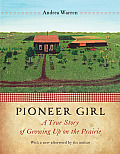
Pioneer Girl is the true story of Grace McCance Snyder. In 1885, when Grace was three, she and her family became homesteaders on the windswept prairie of central Nebraska. They settled into a small sod house and hauled their water in barrels. Together they endured violent storms, drought, blizzards, and prairie fires.
Despite the hardships and dangers, Grace loved her life on the prairie. Weaving Grace’s story into the history of America’s heartland, award-winning author Andrea Warren writes not just of one spirited girl but of all the children who homesteaded with their families in the late 1800s, sharing the heartbreaks and joys of pioneer life.
Prairie Song - Pam Conrad
 3 Comments on Frontier Stories, last added: 1/25/2012
3 Comments on Frontier Stories, last added: 1/25/2012
 20 feet, 16 feet, 20 feet, and 12.5 feet
20 feet, 16 feet, 20 feet, and 12.5 feet
Find a room big enough and stretch the string out, making a rectangle with a door-sized opening at one side.
Measure a bed, a dresser, a table, a stove. Mark the furnitures' dimensions on butcher paper and arrange it inside your string rectangle.
What do you have?
A furnished soddy! Imagine a family living together in this small space.
******************************************************
May B.
by Caroline Starr Rose
Intermediate, Middle School Schwartz & Wade/Random 233 pp.

The verse novel form is particularly well suited to this spare survival story set on the homesteaded Kansas prairie. In late August, young May’s parents send her off to work for a newly married couple on their isolated farm fifteen miles away, promising she’ll be back by Christmas. But when the homesick Mrs. Oblinger runs away and her husband sets off to retrieve her and doesn’t return, May is stranded alone in their sod hut, snowed in, unable to get home, unable to send for help.
Dwindling supplies of food and fuel, evidence of wolves, and a blizzard are the external threats that make up the tense plot, but equally dangerous are the psychological challenges of claustrophobia and despair. Only when May chooses to live fully in the present can she gather her resources for a life-saving plan. A backstory involving May’s dyslexia parallels the themes of abandonment and potent effects of small, rare kindnesses. Author Rose uses a close-up lens and a fine sense of rhythm to draw us into her stark world, Little House on the Prairie without the coziness. “It’s the noise that wakes me / in the darkness close as a shroud. / Wind whips around the soddy; / I imagine I hear the walls groan.” sarah ellis
Recommended for ages 5-10.
This stunning new picture book, written by
Donna Jo Napoli and majestically illustrated by Jim Madsen, tells the story of the Lewis and Clark expedition from the point of view of its youngest participant, baby Jean Baptiste, son of Sacagawea. Strapped onto his mother's back in a cradle board, the baby comments on the various sights and sounds of the expedition. The narrative is written in free verse. Here is an example from the book's opening:
"Rolled in rabbit hide/I am tucked snug/in a cradle pack/in the whipping cold/of new spring./Roar, roar! Grizzlies stand tall in my dreams."
The vibrantly colored two page illustrations effectively capture the grandeur of the American wilderness that is all around the expedition's participants. Jean Baptiste observes eagles, cougars, grizzlies, salmon, elk, birds, and other wildlife that were abundant at the time, as the group makes its way to the Pacific and then back to their home.
An author's note provides some historical context on the journey tiny Jean Baptiste and Sacagawea embarked upon from Fort Mandan, North Dakota to the Pacific and back again. While this book does not give young readers a complete picture of the Lewis and Clark expedition, it would make an excellent class read-aloud or supplement for home schoolers studying Lewis and Clark, allowing students to imagine the journey from an unusual point of view. The illustrations are also wonderfully evocative of another time and place in American history, a time when the frontier was vast and the country ripe for exploration.
For another point of view on the Lewis and Clark Expedition, elementary students might try my favorite book about the expedition,
New Found Land by Allan Wolf (Candlewick, 2004), which tells then story from the point of view of 13 different participants, including Lewis' dog, Seaman. Other historical novels worth consideration are
The Captain's Dog: My Journey with the Lewis & Clark Tribe, by Roland Smith (Sandpiper, 2008); Kathryn Lasky's
The Journal of Augustus Pelletier: The Lewis and Clark Expedition, 1804 (My Name is America) (Scholastic, 2000),

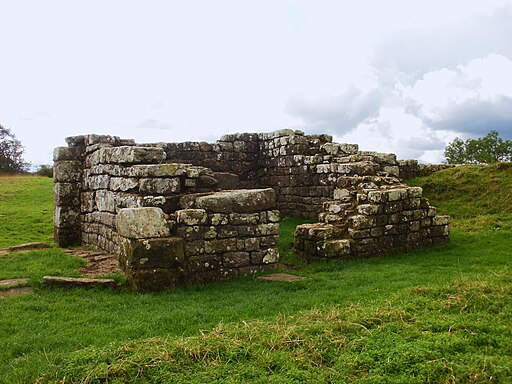













 3 Comments on Frontier Stories, last added: 1/25/2012
3 Comments on Frontier Stories, last added: 1/25/2012


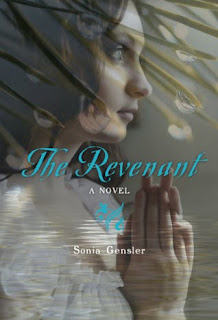
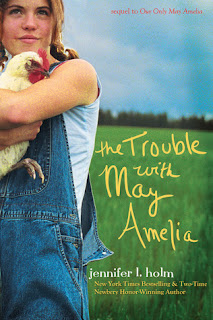




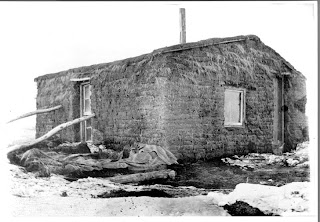

I always wondered about the ceilings... Great pictures!
Wow, this really brings the image of living in a sod house to life! And I thought I had a pretty clear idea after reading May B. It's like living in a small cave; maybe even worse.
Yes, dark and cavelike. But the efforts to prettify things is really something.